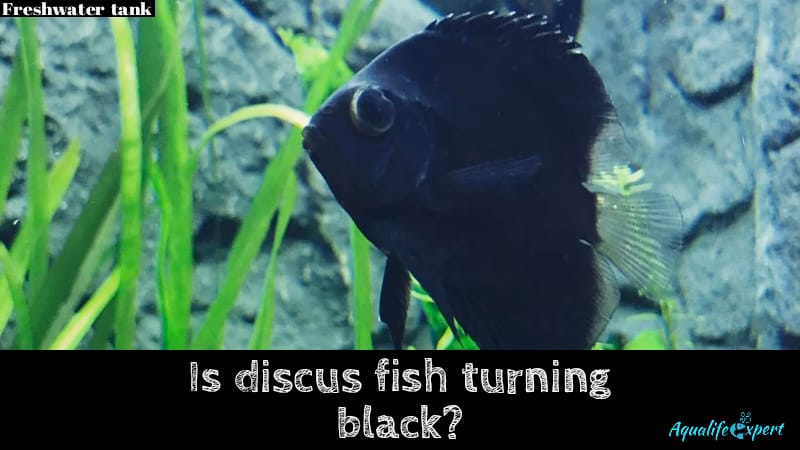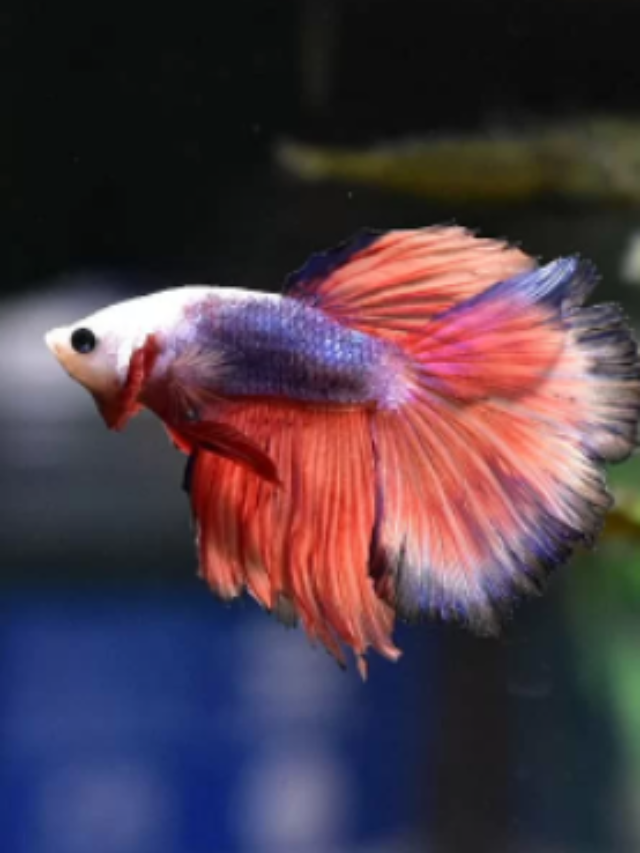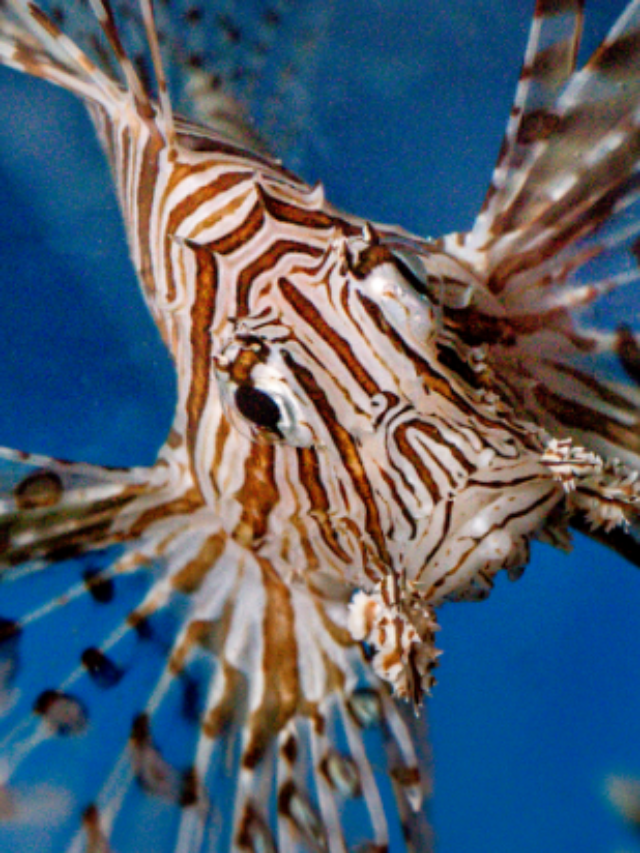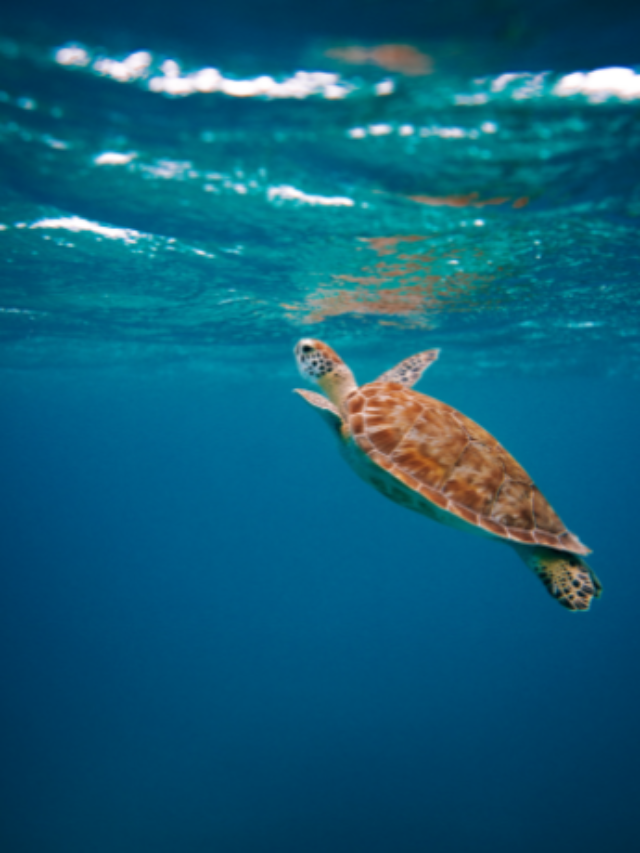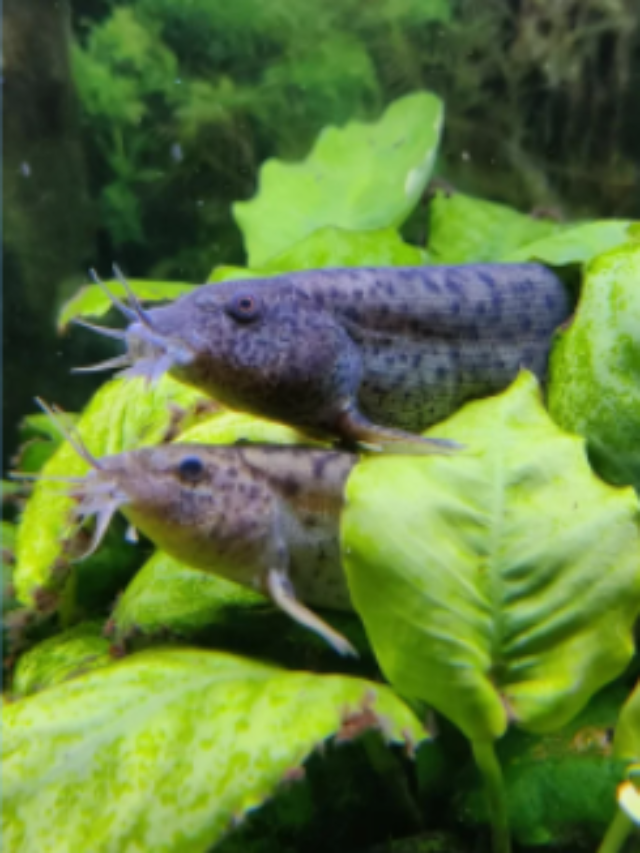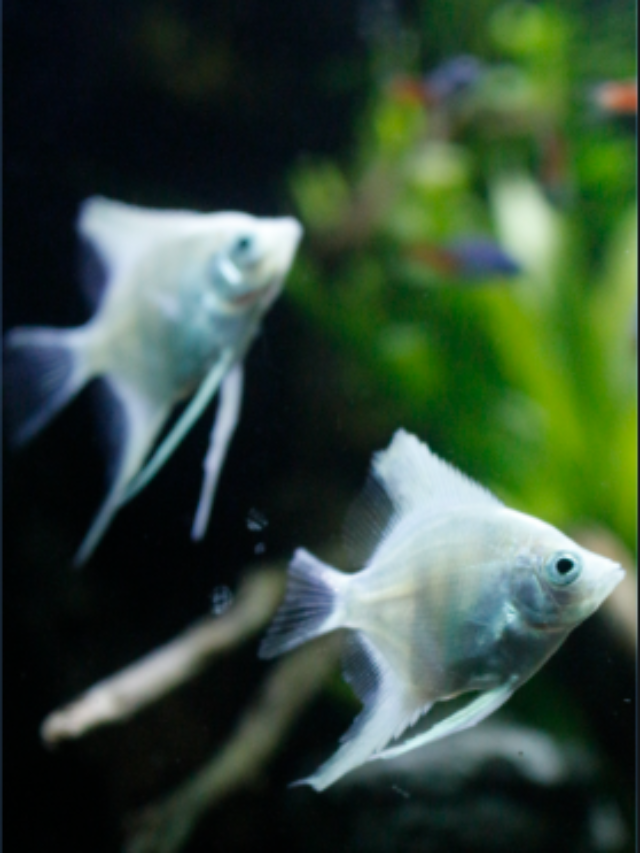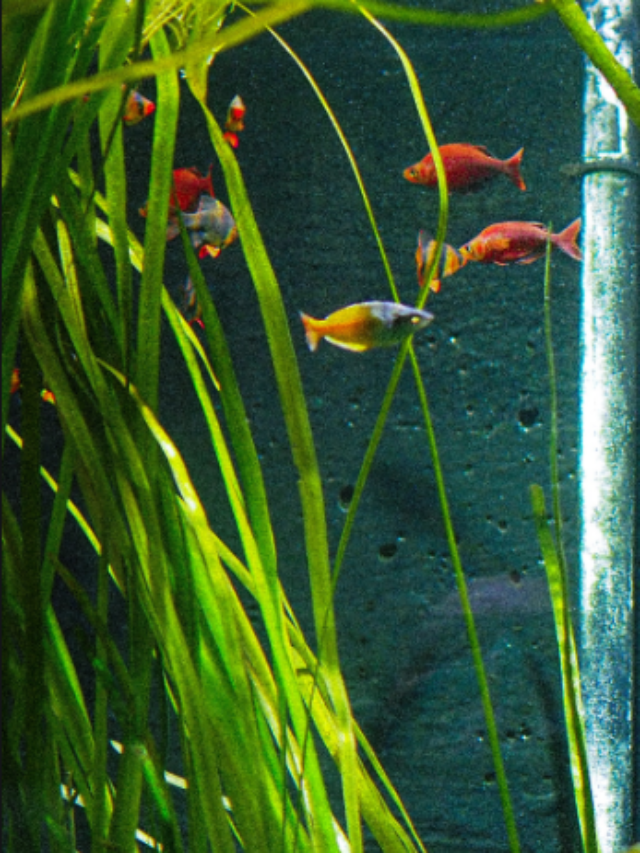Is Discus Turning Black? Don’t Make These Horrible Mistakes
Check Our Quick Stories
Discus fish is one of the most sophisticated fishes among all cichlids. This fish species is famous for its color and its kite-shaped body. So this fish turning into black color means there is something wrong in the aquarium.
Black spots on the body mean discus fish need a light-colored (light blue) background and substrate. But the full body of the discus is turning black means the fish is under stress. This stress may arise by lack of partner (Min 5), high ammonia, nitrite, and chlorine level, wrong acclimation process, bacterial or fungal infections
But only this two-line answer is not enough to know everything about the black spots or shade of discus fish. We need to deep down to know more about it to save this beautiful creature. So let’s dive deep into it.
Types of black color appear on the body of discus fish
There are two types of black colors that appear in the body of discus fish. One is black spots on the body another is turning to the black color gradually and losing its original bright color. For the first type of black spot, you don’t need to take pressure because at that time fish will stay healthy. This type of black spot on the body of discus fish is called black peppering (diplopstomiasis or fluke disease) But if your discus fish is turning dark black in color gradually then you should know there is something wrong happening in your fish tank.
What are the causes of the black color on the body of discus fish?
One of the main causes of the black color is the dark background and the dark and dirty substrate. Discus fish can camouflage and dark background does not help discuss to open its real bright colors. So discus fish turns black instead of remaining in its real bright color. But in this case, the discus will not get full dark or black color in its body. There may be some black spots on its body here and there. This is called ‘black peppering’ (diplopstomiasis or fluke disease) of discus. This black spot does not indicate that the discus is unhealthy or ill.
Discus fish is a very sophisticated fish species and to keep this fish aquarists need light blue color background and white sandy substrate. The fish tank should be clean enough and properly maintained.
There is another type of black or dark color that may appear on the discus’ body. In this case, the discus fish gets full black or dark color on its body. This color appears on the discus’ body slowly. This type of black color appears due to bad internal or external conditions.
Bad water parameters
Water parameters can be a cause of appearing black color on the discus fish’s body. Here bad water parameters mean water temperature, ammonia level, chlorine level, a huge amount of detritus material, wrong pH level, and so on.
High ammonia levels can be very stressful for discus fish. Not only discus fish, but you should avoid high ammonia levels for any type of aquarium fish too. Generally, the ammonia level of a fish tank does not rise without any cause. Fish waste and excess foods help to raise ammonia suddenly.
Here you can’t use hang on back filters for your fish tank. Most aquarists use this power filter but for discus fish tanks it will be better to use a sponge filter to remove all types of detritus from the discus fish tank.
Discus fish like warm water so you can’t fill your aquarium with cool water. You have to have a thermometer that gives a proper reading. This is better to fix the temperature at 28°C to 31°C. At this temperature, discus fish stay healthy and stress-free, and black spots may not appear on its body due to this reason.
Read Here:- Symptoms of chlorine poisoning in a fish tank
Lack of companion
If the water parameters all are okay then aquarists need to check internal parameters. Lack of companion discus fish can be a cause of this color on the body of this fish. Lack of companions creates stress on the discus fish. From the stress, it changes its color to black. As discus is a schooling fish, so one discus fish needs a minimum of 4 numbers of other healthy companions to live comfortably in a tank. If your other discus has died for any reason then you need to buy or arrange other discus fishes to keep healthy all of these in your tank.
Wrong acclimation process
Fishes need to be acclimated in the right way. There are lots of new aquarists who just only acclimate to the temperature and then put all the water with fish from the bag to the aquarium. This is the wrong way to acclimate sophisticated fishes like a discus. A healthy discus fish may get stress from this and black color may appear on its body after a few days.
The best way to acclimate fish is ‘drip acclimation’. By drip acclimation, all the water parameters are acclimated with fish. Fishes do not feel much stress during this time. This process may take time but this is worth it. So for discus fish, it is recommended to apply the drip acclimation method.
Read Here:- How to acclimate fishes from one tank to another
Attack from bacteria, parasites, or fungus
Discus fish can get attacked by parasites, bacteria, or fungus. As discus is sophisticated fish so if it gets stressed a little bit then the brightness of its color disappears and turns into dark color. This is obvious that a discus fish will turn into black color if it gets attacked by bacteria or fungus or parasites. Spironucleus spp, ichthyophthirius multifiliis are two parasites that are responsible for it. Bacteria like Aeromonas hydrophila attacks discus fish and discus become sick and as fungus Fusarium solani, F. moniliform, and F. oxysporum attack discus fish frequently. Due to these issues, the discus may turn black in color.
Read more:- Betta Fish is Turning Black/White: Doctor’s Opinion On It
The parent tank is too small
If the fish tank is too small then the discus fish may get stressed from it and from stress black or dark color may appear on the body of the discus fish. One discus fish needs a minimum of 7 gallon of space to live healthily. This is a rule of thumb. For 5 pieces of discus, you can provide a 50-75 gallon tank. More tank space means more healthy and happy fish.
How do you cure sick black-colored discus fish?
There are some ways to cure the sick black colored discus fish. Some of these processes are common but if you see these processes are not working for your discus then you can go for medication. But first, you should apply the common processes to cure the discus fish. So, let’s deep dive into these processes to know how to help discus fish live healthy again.
Keep on insolation the sick discus fish first
Isolation is the first step in helping discus to be cured. When the discus fish is sick and its body colour is turning black then you must keep it in an isolation period. If you keep it with other fish then its health will deteriorate more. Other strong fishes may attack this and it will create more stress. That sick discus may not leave long days if you don’t shift on an isolation tank immediately.
Set the right water parameters of the isolation tank
To keep discus fish you must follow some water parameters’ reading. These readings are for the general reading of water parameters for keeping a common discus fish. Before putting the sick fish you must set those water parameters’ reading of that isolation tank. These parameters are
PH level – 6.0-7.0
Temperature – 28°C to 31°C
Water hardness – 18 ppm to 70 ppm
Chlorine level – 0.001 ppm to 0.003 ppm
Ammonia level – 0 ppm
Nitrite level – 0 ppm
Keep the isolation tank simple
The isolation fish tank should be simple enough. You should not add any substrate. A bare bottom tank is better for the sick discus fish. Just keep in mind that the background of the tank should be light in color (light blue preferable). There should be enough air circulation. But the water circulation should not be haphazard. This should be uniform and in one direction. For vertical water circulation, you can add air stones here.
Oxygenation of the tank is important here. Sick discus fish should be in moderate oxygen concentration to get well again.
Set up the parent aquarium
There may be a possibility that you may not have the money to invest in building an isolation tank just now. In that case, you have to re-set up the parent aquarium. The water parameters should be the same as that is mentioned on the top.
The main factor you need to change is the detritus material from the fish tank. If the tank is not well maintained then the substrate may contain lots of detritus materials. To clear those hazardous materials you can siphon the substrate well. You can clear glass with a scrubber. If you have unnecessary decorations inside of the aquarium then clear that out. Ultimately you have to change the system of the tank by cleaning if there is anything wrong with the water parameters.
Do 80% of the water change
Water change can be a good solution to fix this sickness of discus fish. If your discus is changing its color to black then the water must be responsible for it. That is why 80% of water change may be useful for your discus fish. But before doing 80% water change you must keep the sick discus fish in another place during this activity.
Use Epsom salt for medication
Epsom salt is very good medicine for aquarium fishes. this helps to clear the digestive system and increase the appetite of fish. if discus is not eating and is turning to a black color then you can provide an Epsom salt bath. Fish become healthy enough. Epsom salt works as a muscle relaxant so this will make fish active again.
if fish is affected by bacteria then Epsom salt may be good medicine for discus. you can use this salt as prevention also. You must provide a salt bath once a week to keep it healthy. but if the condition of your fish is too bad then you should consult with a doctor before using this salt. the reaction of salt depends on fish’s health that’s why this is recommended to consult with an expert.
Read Here:- Is Epsom salt good for the aquarium fish?
Use metrogyl400 tablet for medication
If your discus fish is not improving after applying all of these common treatments then you should understand that discus is affected by bacteria or parasites. To cure it fully you have to rely on proper medication
Metronidazole is a medicine that helps to cure bacterial or parasitic diseases of fish. There is another medicine named Dimetridazole. But if you have this serious issue such as black disease of discus fish then you oy purchase metronidazole.
The dosage of metronidazole medicine is 2 grams per 100 liters (26 gallons) of water. This dosage should continue for 5 days daily. The reaction of this medicine stays only 8 hours. So after 8 hours, you should apply another dosage to your fish tank. You should change 50% of your water in the tank After every 8 hours when the reaction of the previous dosage is finished. After the water change, you should add the next dosage.
This medication process will help the sick discus fish to become healthy again. If you discus fish is affected by bacteria or parasites then after one week the fish will start recovering and the black colour will start disappearing.
| Note: – During the medication period you should remove all the filtration systems because the filter will neutralize the reaction of the medicine and the water temperature should be between 30°C to 32°C. |
Read Here:- Sterilization of aquarium after fish’s death: A VETERINARY guide
Conclusion
Discus fish is one of the popular and colorful fish for an aquarium. People love to keep discus fish but keeping healthy discus for a long period of time is tougher than you think because this is so sensitive fish.
One of the main issues discus fish keepers may face is their pet discus fish is turning black. There are lots of reasons why your discus is facing this problem. This article has shown the right causes of this sickness and its treatment comprehensively. Now you should not face this issue again with your discus if you follow the treatment and the precautions which are mentioned here.
Read More:- 11 Most Popular Discus Fish: Make Your Aquarium Colorful

